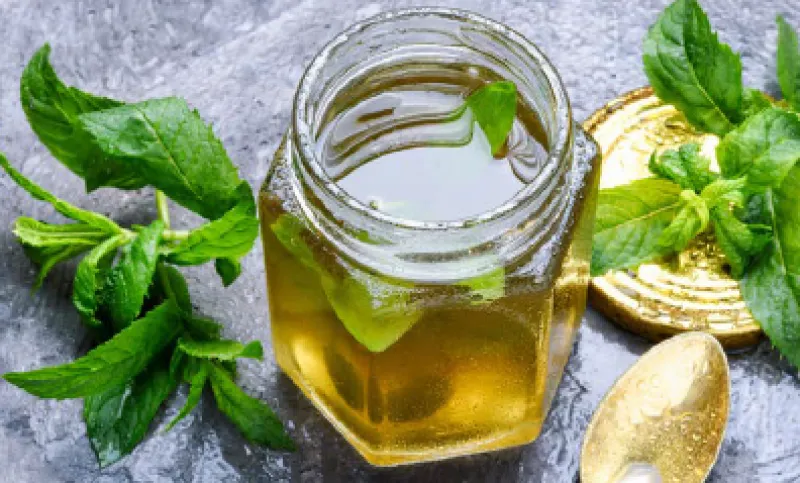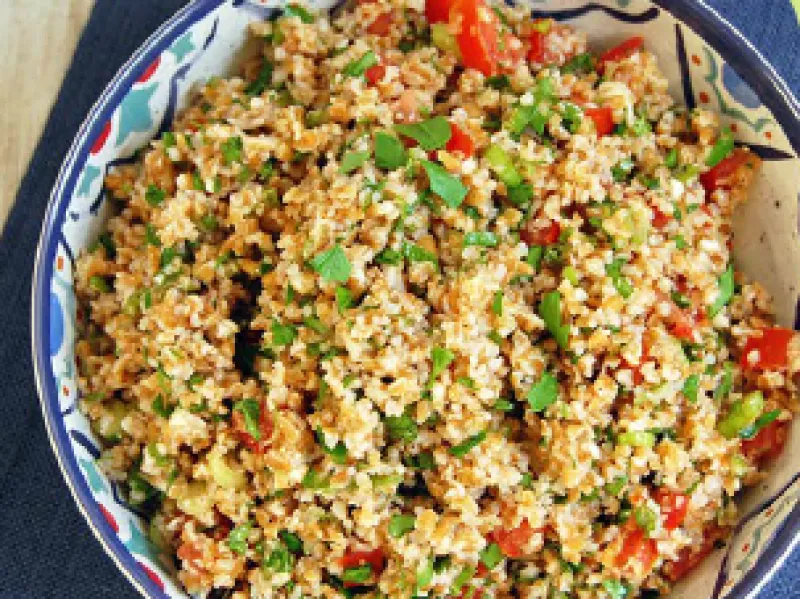Mint Lemonade
5-6 large lemons for 1 c. of juice
⅓ c. mint leaves
¾ c. sugar
8 c. water
Cut lemons and squeeze juice over strainer into liquid measuring cup. Add mint leaves and ¼ cup sugar to pitcher and mash together with wooden spoon. Once mashed, add the lemon juice to the pitcher and stir until sugar is dissolved. Pour in water. Add remaining sugar and stir until dissolved. Refrigerate for at least two hours. Strain before serving if desired.
Makes nine (1-cup) servings. Each serving has 70 calories, 0 g fat, 0 g protein, 19 g carbohydrate, 0 g fiber and 10 mg sodium.
Mint Jelly
1¾ c. mint juice (1½ cups firmly packed fresh mint and 2¼ cups water)
3½ c. sugar
2 Tbsp. lemon juice
1 (3-oz.) pouch liquid pectin
If you never have canned, see www.ag.ndsu.edu/food and review the handout about water-bath canning.
Sterilize canning jars and prepare two-piece canning lids according to manufacturer’s directions.
To prepare mint juice, wash mint, crush leaves and stems or finely chop. Place in saucepan, add water and bring quickly to a boil. Remove from heat, cover and let stand 10 minutes. (A few drops of green food coloring can be added if desired.) Strain to remove mint. Discard mint.
To make jelly, measure 1¾ cups mint juice into a large saucepot. Stir in the sugar and lemon juice. Place on high heat, stir constantly and bring to a full boil that cannot be stirred down. Add the liquid pectin and heat again to a full rolling boil. Boil hard for one minute. Remove from heat; quickly skim off foam. Pour hot jelly immediately into hot, sterile jars, leaving ¼ inch head space. Wipe rims of jars with a dampened clean paper towel; adjust two-piece metal canning lids.
Process in a boiling water-bath canner for five minutes at elevations up to 1,000 feet, 10 minutes from 1,001 to 6,000 feet or 15 minutes at altitudes above 6,000 feet.
Yield: About 3 or 4 half-pint jars
Serve with roasted lamb or chicken, or as a dessert topping for chocolate or vanilla ice cream. Try topping cream cheese with mint jelly and serving with crackers.
Recipe source: So Easy to Preserve, 6th ed. 2014. Bulletin 989, Cooperative Extension Service, the University of Georgia, Athens.
Lemon-Mint Tabbouleh
¼ c. olive oil
¼ c. lemon juice
3 garlic cloves, minced
1 c. bulgur (cracked wheat)
1 c. boiling water
1 c. cherry tomatoes, seeded and chopped
½ c. parsley, chopped
½ c. green onions, chopped
2½ Tbsp. chopped fresh mint
Whisk oil, lemon juice and garlic in small bowl to blend; set aside. Place bulgur in large bowl and mix in boiling water. Let stand until bulgur is tender and water is absorbed, about 15 minutes. Mix in tomatoes, parsley, green onions and mint. Add oil mixture; toss to blend. Season with salt and pepper. Let stand at least 30 minutes to blend flavors.
Makes 10 (½-cup) servings. Each serving has 100 calories, 6 g fat, 2 g protein, 12 g carbohydrate, 3 g fiber and 5 mg sodium.
Key to abbreviations
c. = cup
g = gram
kg - kilogram
tsp. = teaspoon
mg = milligram
oz. = ounce
Tbsp. = tablespoon
Funding for this publication was made possible by the U.S. Department of Agriculture’s Agricultural Marketing Service through grant AM170100XXXXG005. Its contents are solely the responsibility of the authors and do not necessarily represent the official views of the USDA.
For more information on this and other topics, see www.ndsu.edu/extension



